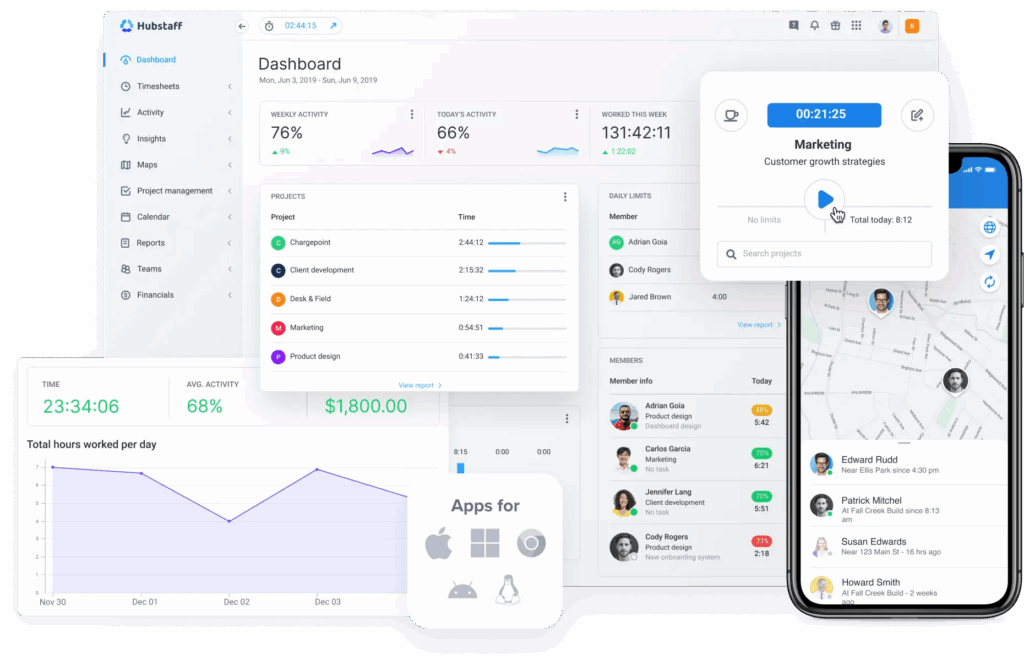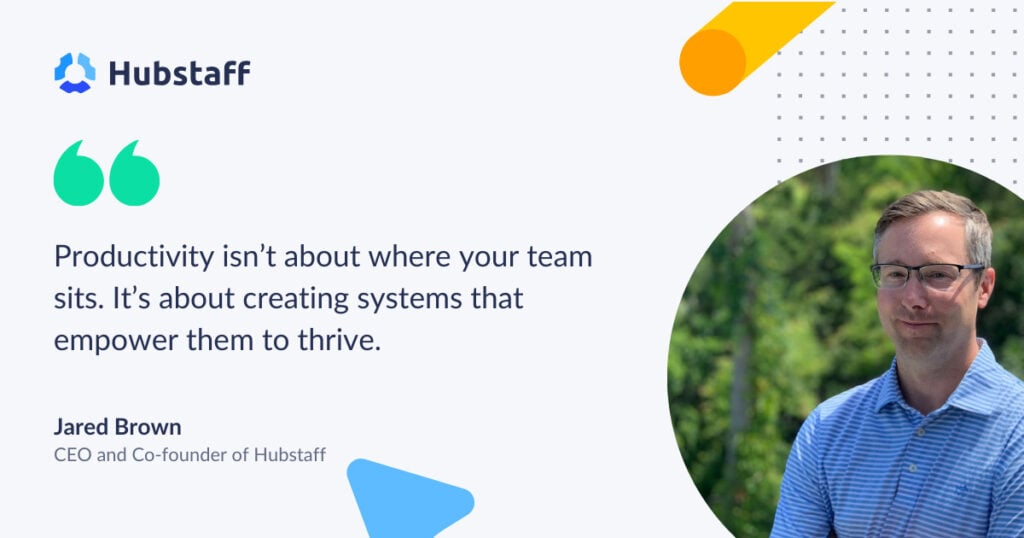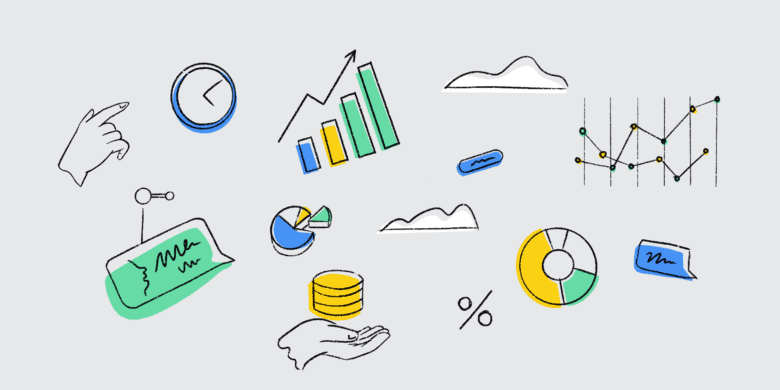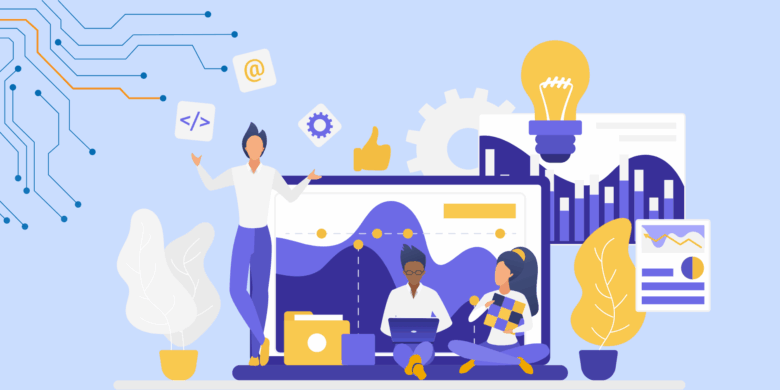Remote work can be one of the most freeing experiences for employees and employers — but only by implementing a culture of time tracking for trust.
Flexible hours, digital nomading opportunities, and non-existent commutes are just a few reasons for employees to be excited. Employers also benefit from remote work’s significant cost savings and employee retention advantages.
But beyond these flashy perks, there is an elephant in the room: productivity.
Creating a culture that prioritizes work-life balance while still maintaining productivity can be challenging without the right tools.
In this post, we’ll demonstrate how Hubstaff’s time tracking and employee productivity features are meant to support and empower remote and hybrid teams, strike this balance, and aid in building a healthy culture.
The goal is to guide remote team managers through the role of employee productivity software in the modern workplace, how to maintain trust across teams, and the long-term benefits of implementing software like Hubstaff.
Let’s get started.
See Hubstaff in action
Watch our interactive demo to see how Hubstaff can help your team be more productive.
The Role of Employee Monitoring in the Modern Workforce
While it took a while for the narrative to flip, remote work has seen a significant shift in perception — and that’s thanks to cold, hard data.
Thanks to fewer distractions and more flexible work hours, studies show a 35-40% increase in output from remote teams. Our Workstyle Report noticed an uptick in focus time from remote and hybrid work (52% average focus time vs just 46% for in-office teams).
However, there’s one factor these studies overlook: the prevalence of remote employee monitoring software.
While it may not be a fan favorite amongst remote employees (or their employer’s favorite discussion to have when implementing), the prevalence of this software has reached historic highs.
These days, an estimated 96% of businesses are using some form of monitoring software to:
- Protect sensitive data
- Meet industry-specific compliance standards
- Monitor internet usage
- Gain insights into the software their teams are using most
- Strike a balance between meeting and focus time
This shift towards remote work software has brought forth new privacy concerns and the need for CCPA, ECPA, GDPR, and other legislation to adapt to the times. However, employee monitoring software isn’t meant for employers to micromanage their teams without consequence.
At Hubstaff, we view this software as a means to uncover new data on the way teams work, what tools they use, and what blockers keep them from reaching their full potential.

But before you can reap the productivity benefits of an employee monitoring solution, you’ll need to establish a culture of trust.
How Hubstaff Approaches Privacy and Trust for Employee Monitoring
While it is legal to monitor without consent from your team, we’ve found the best approach for sustained success is to create a culture of privacy and trust across remote and hybrid teams. That’s why we developed our guiding principles of Transparency, Access, and Control.
The idea is to allow remote and hybrid teams to use Hubstaff based on their own management style. That means offering full customization of the product with features like:
- Activity. Hubstaff generates activity scores based on the frequency of keyboard and mouse usage. Use the data to gauge productivity, flag signs of potential burnout, or disable the feature altogether.
- Apps & URLs. Track app and URL usage to glimpse how teams work, what tools they use the most, and how you can empower them to be more productive. You can track just apps, blur app and URL data, or disable the feature entirely.
- Screenshots. You can enable, disable, hide, blur, and adjust the frequency of screenshots to suit your management style.
- Locations. Enable locations for teams in the field for better route tracking, more accurate ETAs, and automatic clock-ins and clock-outs. You can disable the feature for in-office and remote teams.
Disclaimer: Hubstaff won’t track time, activity, or other data when the timer is stopped, nor will it provide keylogging or webcam and microphone tracking.
Based on these customizable settings, the dashboard will show real-time performance data. Users can access data like screenshots and delete them at any time to protect sensitive information.
Explore Insights
With the Insights add-on, you can better balance meeting and focus time, manage utilization rates, and spot suspicious activity that could signify security risks or an attempt to hack Hubstaff.
With Hubstaff, the idea is not to obsess over benchmarks but to use the data to optimize productivity, create more accurate project scopes, cut costs, and empower teams with the right technology.
While it may take some effort to get buy-in from your team, there are also a number of benefits for employees.
How Employees Benefit from Time Tracking
Employee monitoring software adoption often fails due to a lack of buy-in. That lack of acceptance stems from failure to showcase the advantages of employee monitoring tools for employees, not just managers.
Nobody wants their time or activity tracked at work, but that doesn’t mean there aren’t some hidden advantages to employee monitoring that employees can benefit from, like:
- Easier data collection for raises, bonuses, and promotions. With Hubstaff, top-performing employees have tangible data to back up their performance. Features like achievement badges help showcase employees who reach milestones for activity streaks, hours worked, and projects completed — a helpful glimpse at performance when it comes time for employee reviews.
- The ability to spot burnout. Most think of employee monitoring tools as a means to fill every second of the workday with deliverables. Good managers can use the visibility tools like Hubstaff provides to spot burnout before it’s too late.
- Sustainability of remote and hybrid work. Tools like Hubstaff make remote and hybrid work possible. While it may not be your employees’ favorite tool in their tech stack, employee monitoring allows employees to get out of the office to travel, spend more time with their families, work their preferred hours, and embrace the comforts of home.
Time tracking and employee monitoring tools will likely never top the list of your employees’ favorite tools in your tech stack. That said, articulating how this software makes it possible to work how they want is a great first step in getting the necessary buy-in for sustainable remote and hybrid work.
Are you worried about getting employee buy-in to time tracking and employee monitoring? Check out our detailed guide for more information on how to make the transition to software like Hubstaff as smooth as possible.
Trusting The Process: Building a Winning Remote Culture with Time Tracking
Adopting a new way of working (and the new technology you need to be effective in that model) is no easy task.
But as the saying goes, distance makes the heart grow fonder. No matter where team members clock in from, creating a unified culture is crucial — a togetherness that stems from apartness.

With the right time tracking and productivity tools, you can find strength in a team of individuals who have the freedom to live their lives the way they see fit — and without a drop off in productivity.
With Hubstaff, the goal is to help remote and hybrid teams around the globe create a winning environment. That means happy, long tenured employees, an absence of micromanagement, and the freedom to work from anywhere.
If you believe in our mission of employee-first time tracking and productivity features, take Hubstaff for a spin with a free demo.
FAQs: Add these questions and provide answers at the bottom
How does employee monitoring impact trust?
If implemented poorly, employee monitoring can negatively impact trust. Intent, transparency, and the overall culture around employee monitoring can determine how the software is received. Tools like Hubstaff intend to create a culture of trust around employee monitoring by giving employees access to their data and managers control over what data is collected and how.
Features Insights intends to reframe employee monitoring to allow managers and their teams to see real-time productivity insights. The goal? Finding a healthy balance between employee productivity and well-being.
Updated: What should employers do when monitoring for workplace security and privacy?
Hubstaff focuses primarily on consensual, trust-based monitoring that gives users access to their data. It allows managers full control over what information they track to increase productivity while respecting personal boundaries.
If you’re unsure of the legality of your monitoring practices, check out our quick guide to employee monitoring laws. We’d also highly recommend seeking additional information, as regional and federal laws may vary based on the location of your business and the team members you employ.
What are the potential privacy concerns associated with monitoring employee behavior?
Excessive, unclear, or non-work-related monitoring can raise privacy concerns. Ethical monitoring involves collecting only relevant information, keeping it secure, and providing transparency (employee visibility) into the data you plan to collect.
Tools like Hubstaff ensure enterprise-grade data collection best practices in correspondence with regulations like GDPR, HIPAA, and SOC 2 Type II. For more information, check out our privacy policy.
Disclaimer: Hubstaff does not offer keystroke logging features, webcam monitoring, or microphone tracking.
Do privacy regulations prevent employers from monitoring employees?
As the laws currently stand, regulations like GDPR and CCPA do not prohibit employee monitoring practices. However, they do impose strict laws on how data can be collected. Hubstaff’s approach ensures compliance while keeping monitoring purposeful, ethical, and employee-focused.
If you plan to monitor employees, you must ensure compliance with all corresponding legislation in your business and team members’ locations. A good place to start is with our Privacy Policy and guide to employee monitoring laws.
Most popular
Top Employee Monitoring Software for Mac: 2025 Guide
Hey, Mac enthusiasts! Are you feeling a little lost in the complex world of employee monitoring software —especially when lookin...
6 Signs Your Employees Can Tell They’re Being Monitored at Work
Noticing unfamiliar software, restricted access, or slower internet? These might be signs you are being monitored at work. I...
The Complete Guide to User Activity Monitoring: Tools, Benefits, and Ethics
Have you ever noticed how the conversation around monitoring tends to swing between “track everything” and “trust everyone b...
How to Be a Great Remote Manager: Top Strategies and Tips
Steve Jobs once said, “Innovation distinguishes between a leader and a follower.” When you’re learning how to be a great rem...




